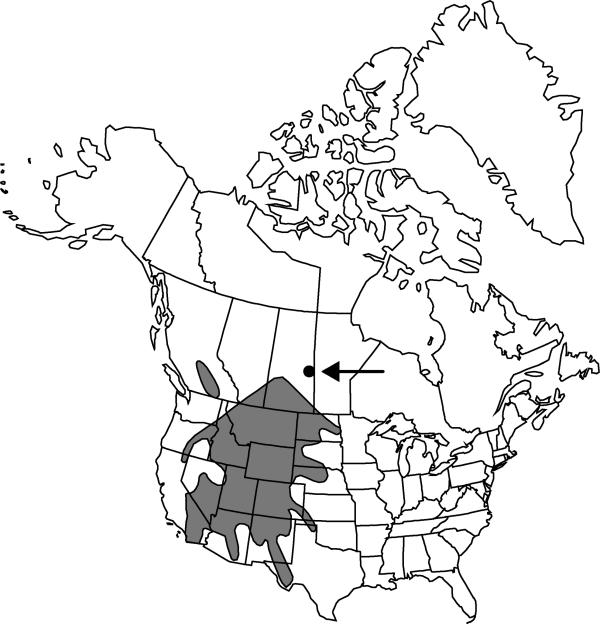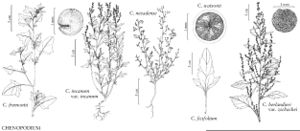Chenopodium fremontii
Botany (Fortieth Par allel), 287. 1871.
Stems erect to spreading, simple proximally, branched distally, 1–8 dm, farinose. Leaves non-aromatic; petiole 0.4–2.5 cm; blade usually broadly triangular, sometimes ovate to elliptic, 0.7–6 cm thick, base truncate or cuneate, margins entire or with a pair of basal teeth or lobes, apex rounded to obtuse, farinose abaxially. Inflorescences glomerules in terminal and axillary interrupted spikes, 16–22 × 4–5 cm; glomerules 2–5 mm diam., maturing mixed; bracts small, margins entire. Flowers: perianth segments 5, distinct nearly to base; lobes ovate, 0.7–1 × 0.5–0.9 mm, apex obtuse, carinate, farinose to subglabrous, completely covering fruit at maturity; stamens 5; stigmas 2, 0.2–0.5 mm. Utricles ovoid; pericarp nonadherent, warty-smooth. Seeds round, 1–1.3 mm diam.; seed coat dark reddish brown to black (sometimes with light streaks), ± smooth. 2n = 18.
Phenology: Fruiting late summer–fall.
Habitat: A wide variety of habitats from desert, cliffs, talus, and moist shaded areas under aspen, junipers, or pinyons, often in riparian habitats
Elevation: 2000-2900 m
Distribution

Alta., B.C., Man., Sask., Ariz., Calif., Colo., Idaho, Kans., Mont., Nebr., Nev., N.Mex., N.Dak., Oreg., S.Dak., Tex., Utah, Wyo., Mexico (Baja California, Coahuila, Tamaulipas).
Discussion
Selected References
None.
